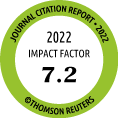Return to content in this issue
Unraveling the Diagnosis of Kiwifruit Allergy: Usefulness of Current Diagnostic Tests
D’Amelio CM1,2,3*, Bernad A1,4*, García-Figueroa BE2,3,5, Garrido-Fernández S5, Azofra J6, Beristain A6, Bueno-Díaz C7,8, Garrido-Arandia M9,10, Gastaminza G1,2,3, Ferrer M1,2,3, Díaz Perales A9,10, Villalba M7,8,Goikoetxea MJ1,2,3
1Allergology Department, Clínica Universidad de Navarra, Pamplona, Spain
2Member of the Spanish Research Network on Allergies (ARADyAL) RD 1600060031 of the ISCIII, Madrid, Spain
3Instituto de Investigación Sanitaria de Navarra (IDISNA)
4Allergology Service of Fundación Hospital Calahorra, Calahorra, Spain
5Allergology Department, Complejo Hospitalario de Navarra, Pamplona, Spain
6Allergology Department, Hospital Universitario Central de Asturias, Oviedo, Spain
7Department of Biochemistry and Molecular Biology, Faculty of Chemical Sciences, Universidad Complutense de Madrid, Madrid, Spain
8Member of the Spanish Research Network on Allergies (ARADyAL) RD1600060014 of the ISCIII, Madrid, Spain
9Department of Biotechnology and Plant Biology, Universidad Politécnica de Madrid, Madrid, Spain
10Member of the Spanish Research Network on Allergies (ARADyAL) RD160006003 of the ISCIII, Madrid, Spain
*Both authors contributed equally.
J Investig Allergol Clin Immunol 2022; Vol 32(3)
: 206-212
doi: 10.18176/jiaci.0691
Objectives: To determine the usefulness of the in vitro and in vivo methods used in the diagnosis of kiwifruit allergy and to specifically assess the impact of seed proteins on sensitivity.
Methods: We performed skin prick tests (SPTs) using various commercial extracts, homemade pulp, and seed extracts and prick-prick tests with kiwifruit on 36 allergic patients. The presence of specific IgE (sIgE) was assessed using the ImmunoCAP (kiwifruit extract), ELISA (Act d 1, Act d 2), ISAC, and FABER assays. Immunoblotting of seed extract was carried out, and a single-blind oral food challenge was performed with whole seeds in seed-sensitized individuals.
Results: The prick prick test with kiwifruit demonstrated the highest diagnostic capacity (81.8% sensitivity and 94.1% specificity) among the in vivo tests. The sIgE levels measured using ImmunoCAP (kiwifruit extract) showed a similar sensitivity to that of global ISAC and FABER (63.9%, 59.5%, and 58.3%, respectively). Act d 1 was the major allergen. Sensitization to Act d 1 was associated with positive sIgE results to whole kiwifruit extract detected by ImmunoCAP (P<.000). A positive SPT result to kiwifruit seeds was associated with severe symptoms induced by kiwifruit (P=.019) as a marker of advanced disease, but not with clinically relevant sensitization. Challenge testing with kiwifruit seeds performed on 8 seed-sensitized patients yielded negative results.
Conclusions: Sensitization to Act d 1 is associated with a positive result in conventional diagnostic techniques, whereas kiwifruit seed sensitization does not increase the sensitivity of the diagnostic techniques evaluated.
Key words: Allergy, Component-resolved diagnosis, Kiwifruit, Skin test, Storage protein
| Title | Type | Size | |
|---|---|---|---|
 |
doi10.18176_jiaci.0691_material-suppl_1.pdf | 304.10 Kb |



